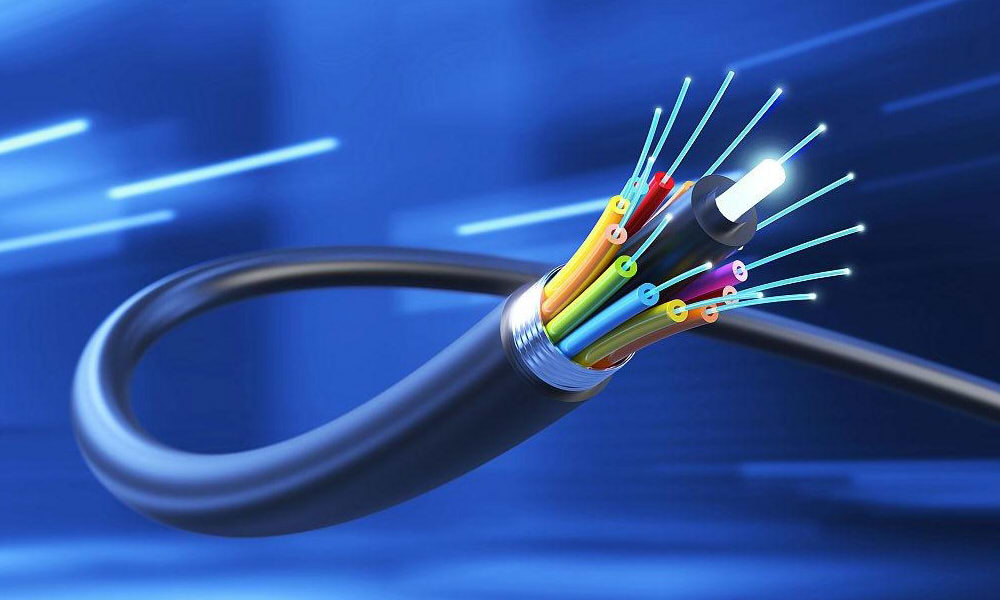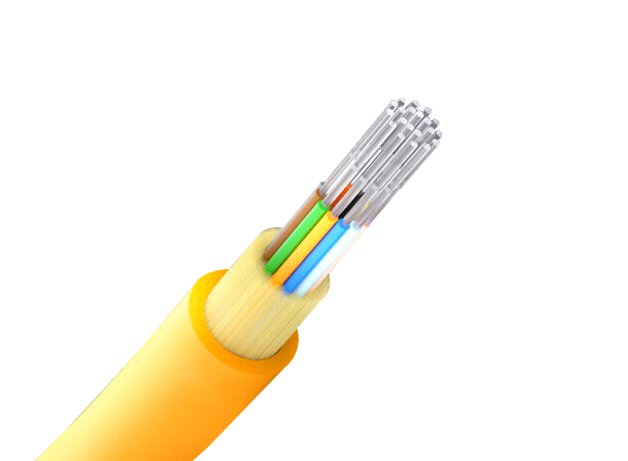Fiber optics is a means of transmitting information.. How does fiber optic work? In fact, is manufactured according to the principle of total light reflection. The fiber optic core is usually a double concentric cylinder of quartz glass.. It is brittle and breaks easily, so additional protective layers are needed. In addition to the plastic cover, outdoor fiber optic cables also have an armored layer.

Table of Contents
– Types of Optical FibersProduction Material
Transmission Mode
Application
– How Does Fiber Optic Work?
The light and its properties
Refraction and Reflection of Light
Optical Signal Conversion
– Advantages of Fiber Optic Transmission
Wide Frequency Band
low loss
Light weight
High Resistance to Interference
Reliable Performance
Downward Costs
– Resume
Types of Optical Fibers
As communications technology continues to advance, the range of fiber optic products continues to grow. The development of optical fibers for different applications has been particularly rapid in recent years.. Fiber optic cables can be classified according to the materials used for their manufacture., the mode of transmission and its use.
Production Material
- High Purity Quartz Glass Fiber Optic. This material has low losses, from up to 0,47 dB/km at long wavelengths. with materials silicon from germanium for the core and borosilicate material for the cladding of multimode optical fiber, the loss is as low as 0,5 dB/km.
- Multicomponent glass fibers. These fibers are usually more conventional glass and have low losses.. For example, Sodium-borosilica-te glass fibers have minimal loss of 3,4 db/km a l=0,84 µm.
- plastic fiber optic. It's lighter, cheap, flexible and easier to process than quartz fiber optics. But his loss is great, a I = 0,63 micron is about 100-200db/km.
Transmission Mode
- single-mode optical fiber. The core diameter of single-mode optical fiber is usually 9 o 10 μm, close to the wavelength. It is only capable of transmitting one signal wave mode. There is no scattering mode because light travels only along a straight line in it., without reflection. This makes the singlemode fiber be suitable for trunked systems, high capacity and long distance, due to its high transmission bandwidth.
- multimode fiber optic. The core diameter of multimode fiber is typically 50 o 62,5 μm, much greater than the wavelength. Can transmit multiple light modes. Nevertheless, its intermodal dispersion is large, which limits the frequency at which digital signals can be transmitted. For example, a 600MB/KM fiber will only have a 300MB bandwidth at a distance of 2KM. As a result, multimode fiber can be transmitted over relatively short distances, usually a few kilometers.

Application
Fiber optic cables can be divided into communication fibers and non-communication fibers based on their applications.. Special fibers include low birefringence fibers, high birefringence fibers, coated fibers, liquid core fibers, laser fibers, aerial fibers for outdoor, etc.
Specifications of the most used optical fiber:
Monomodo: 8/125μm, 9/125μm, 10/125μm
multimode: 50/125μm, 62,5/125μm
Industrial networks, medical and low speed: 100/140μm, 200/230μm
Plastics for automotive control: 98/1000μm
How Does Fiber Optic Work?
The light and its properties
Light is an electromagnetic wave. The visible part of the wavelength range is from 390 a 760 nm. The part of the light above 760 nm is infrared and the lower than 390 nm is ultraviolet. The three most commonly used wavelengths in optical fibers are 850, 1310 Y 1550.
Refraction and Reflection of Light
Light travels at different speeds in different substances.. When light is directed from one substance to another, is refracted and reflected at the interface between the two substances. The angle of the refracted light varies with the angle of the incident light.. When the angle of incident light reaches or exceeds a certain angle, all incident light is reflected, what is called total reflection of light.
Fiber optic communication is based on these principles. The main part of an optical fiber is usually divided into three layers. In the center is a high refractive index glass core. And on the outer layer there is a low refractive index silica glass coating. The outermost layer is a reinforcing resin coating.
Optical Signal Conversion
The optical transmission system consists of three components: the light source, the transmission medium and the detector. It is common for a pulse of light to represent the bit 1 and that no pulse of light represents the bit 0. When light hits the detector, produces an electrical pulse. With a light source at one end of the fiber and a detector at the other, a one-way transmission system is formed. Receive an electrical signal, converts it into a light impulse and transmits it, and then the receiving end converts the light impulse back into an electrical signal.
Advantages of Fiber Optic Transmission
After Maiman, an American scientist, invented the world's first laser 1960, provided a good light source for optical communication. In the following two decades, research was carried out on optical transmission media and, finally, Low-loss optical fibers were manufactured. Since then, Optical communication has entered a phase of rapid development. Fiber optic transmission has many notable advantages.

Wide Frequency Band
The frequency band represents the transmission capacity. The higher the frequency of the carrier wave, the greater the bandwidth in which the signal can be transmitted. Although optical fibers can have different losses due to the use of different frequencies of light, its bandwidth can reach 30.000 GHz. can be arranged 2.000 optical carriers in the range of 30.000 GHz using advanced coherent optical communications. Can host millions of channels.
low loss
Los best cables coaxial cables have a loss of more than 40 dB per kilometer when transmitting signals 800 MHz. Instead, the losses of optical fibers are much lower. For 1.31um light transmission, the loss per kilometer is less than 0,35 dB. If 1.55um light is transmitted, the loss per kilometer is even less, until 0,2 dB or less. This level of power loss allows transmission over much greater distances..
Light weight
Optical fibers are very fine. An optical cable composed of between 4 Y 48 fibers has less than 13 mm in diameter. It is much smaller than the 47 mm diameter of a standard coaxial cable. Besides, optical fibers are glass, giving it a small diameter and light weight. So, It is very easy to install.
High Resistance to Interference
The basic component of optical fibers is quartz., that only transmits light and does not conduct electricity. So, the optical signals that are transmitted in them are not affected by electromagnetic fields. Thus, fiber optic transmission is highly resistant to electromagnetic and industrial interference. Signals transmitted by fiber optics are less likely to be heard and facilitate confidentiality.
Reliable Performance
The reliability of a system is related to the number of devices that compose it.. The more devices there are, the higher the probability of failure. Fiber optic systems contain fewer devices and are naturally more reliable. Besides, los fiber optic devices have a long shelf life, with a failure-free operating time of 500.000 a 750.000 hours.
Downward Costs
A new Moore's Law has been proposed, also called Optical Law. This law establishes that the bandwidth of information transmitted by optical fibers increases by a factor of one every six months., while the price decreases by a factor of one. The development of optical communication technology has laid a very good foundation for the development of broadband technology for the Internet..
Resume
The working principle of fiber optic cables is mainly realized by photoelectric signal conversion and light transmission principle.. As an important part of modern communications, optical fibers will continue to be used and developed in the future.

1 thought on “How Does Fiber Optic Work? Fiber Optic Types”
Comments are closed.